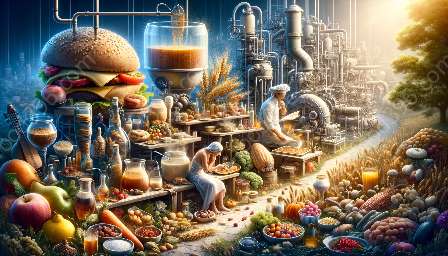Food preservation methods have undergone a remarkable evolution over centuries, from traditional practices such as smoking and salting to modern techniques like canning. This evolution is closely tied to the advancement of food technology and innovation, as well as the influence of food culture and history.
Traditional Preservation Methods
Smoking: Historically, smoking was used as a method to preserve meat and fish. The process involved exposing the food to smoke from burning or smoldering plant materials, which not only added flavor but also helped to inhibit the growth of bacteria and fungi. Smoking was crucial for preserving perishable food in the absence of refrigeration.
Salting: Salting, or curing, was another ancient preservation method. By covering food with salt, moisture was drawn out, inhibiting the growth of bacteria. Salt also added flavor and helped to preserve food for extended periods, especially before the advent of modern preservation techniques.
Advancements in Preservation Technology
Innovation in food preservation technology has transformed the way we store and consume food. One of the most significant advancements was the development of canning. In the early 19th century, Nicolas Appert invented the method of sealing food in glass jars and heating them to destroy microorganisms, effectively preserving the contents. This canning technique revolutionized the food industry and dramatically extended the shelf life of perishable goods.
Furthermore, refrigeration and freezing technologies significantly impacted food preservation. The ability to maintain low temperatures allowed for the long-term storage of fresh foods, changing the way food was transported, stored, and consumed.
Modern Preservation Techniques
Today, food preservation methods have evolved to include a variety of innovative techniques. High-pressure processing, freeze-drying, and vacuum packaging are just a few examples of modern preservation methods that have enabled food to be preserved with minimal impact on nutritional value and taste.
Additionally, advancements in food packaging materials and technology have contributed to extending the shelf life of food products without the need for excessive preservatives, further enhancing food safety and sustainability.
Impact on Food Culture and History
The evolution of food preservation methods has deeply influenced food culture and history. Traditionally preserved foods, such as smoked meats, salted fish, and pickled vegetables, have become integral parts of many culinary traditions around the world. These methods not only preserved food but also created unique flavors and textures that have been passed down through generations.
Furthermore, the industrialization of food preservation has shaped the way we produce and consume food on a global scale. Canning and other modern preservation techniques have allowed for the mass production and distribution of food, leading to significant changes in dietary habits and food accessibility.
Conclusion
The evolution of food preservation methods, from ancient practices to modern innovations, reflects the dynamic intersection of food technology, culture, and history. These methods have not only prolonged the shelf life of food but also contributed to the rich tapestry of culinary traditions and global food systems.

